In recent years, the global buzz around hydrogen has been hard to ignore. An economy based on hydrogen instead of fossil fuels is one of the cornerstones of the European Union’s Green Deal. And Australia and Germany have signed a Hydrogen Accord to accelerate the development of a hydrogen industry.
Removing regulatory barriers is certainly a key area to help the hydrogen economy take off – the other is helping to create demand. The time is ripe to take hydrogen solutions into commercial application, argues Bielinski. “If we can bring the unit cost of hydrogen down by achieving scale in hydrogen production, then it starts to get interesting for everybody. There’s no doubt about it, producing green hydrogen today is expensive. The goal for us is to get it down to AUS$2 a kilogram,” he says. This is the 2030 target laid out in Australia’s National Hydrogen Strategy.
“Right now it’s a chicken-and-egg situation,” he says. “We need to invest in hydrogen infrastructure, and we need the demand. We know that by 2050, a really significant portion of our energy as a society is going to come from hydrogen, but how to get there, how to pull yourself up by the bootstraps?” One bootstrap comes in the form of a 1.25-megawatt electrolyser that Siemens Energy recently commissioned for its customer Australian Gas Infrastructure Group (AGIG).
“What’s really making the difference this time round is the falling cost of renewable electricity,” explains AGIG’s chief executive Craig de Laine for whom hydrogen is the key to transitioning his business to a low-carbon future. “The second aspect to making green hydrogen production more economical is the capital costs of electrolysers and that will fall as demand grows. The third factor is keeping the electrolyser running. If you only use it a few hours a day, each kilogram of hydrogen produced will be expensive. So you need readily available, cheap renewable power, ideally with solar and wind complementing each other.”





